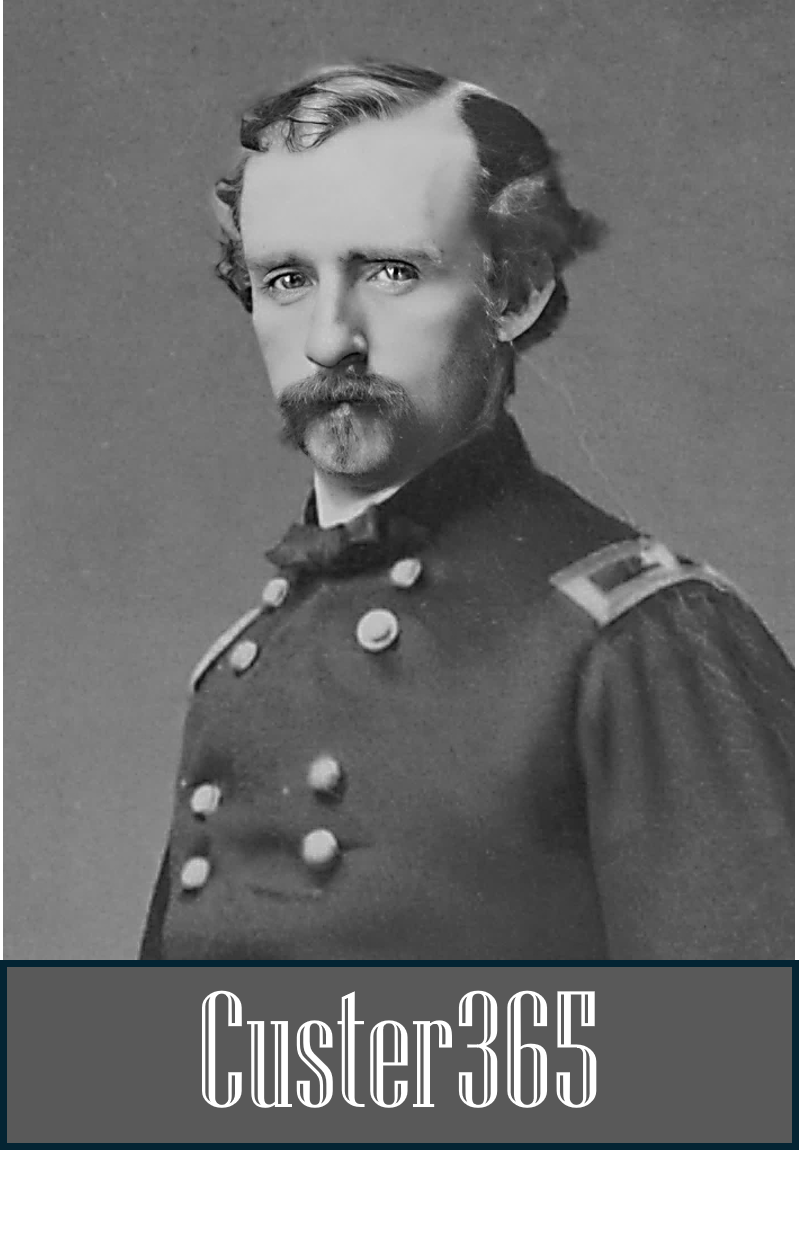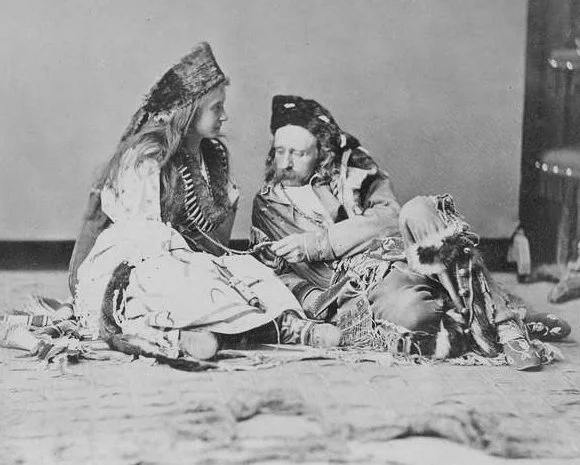OCT 31: Custer in Costume
George A. Custer’s uniforms were often considered costume-like: a cacophony of floppy hats, too-big boots, and a flowing red kerchief or scarf. It was all part of his flamboyant and distinctive style.
In 1875, some officers at Fort Abraham Lincoln and their wives dressed up for a tableaux vivant (“living picture”) performance. He appeared in one scene, along with his sister Margaret Custer Calhoun, wearing a wig, a large hat, and a coat with long tails to represent a Quaker Peace Commissioner. In another scene, Custer is dressed as a Sioux chief alongside Mrs. Agnes Bates dressed as a Sioux woman.
The Quaker connection dated back to 1869 when Ely Parker, President Ulysses Grant’s Commissioner of Indian Affairs, began to clean out a horde of cheats and swindlers embedded in the federal Indian bureau. Tied into Grant’s desire to create a “humane and Christianizing policy towards the Indians,” Parker began replacing political appointees with representatives from various Christian denominations. The largest contingent of new commissioners was affiliated with the Society of Friends, more commonly known as Quakers. (Note: To bypass legal concerns regarding the separation between church and state, Grant refused to ask his Attorney General, Ebenezer R. Hoar, for legal advice on the matter.)
Grant’s Quaker-heavy Peace Policy was not a big hit among many politicians, business leaders, and the military, who believed using force and not prayer to subdue Indian tribes was the way to go.
The “living picture” photos of Custer were taken by photographer Orlando S. Goff.
Mrs. Agnes Bates, left, and George Custer are dressed as a Sioux couple in 1875. (Credit: National Park Service)
George Custer, dressed as a Quaker Peace Commissioner, and his sister Margaret in 1875. (Credit: National Park Service)



